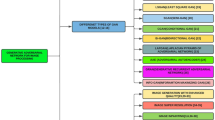Abstract
Training modern generative adversarial networks (GANs) to produce high-quality images requires massive datasets, which are challenging to obtain in many real-world scenarios, like healthcare. Training GANs on a limited dataset overfits the discriminator on the data to the extent that it cannot correctly distinguish between real and fake images. This paper proposes an augmentation mechanism to improve the dataset’s size, quality, and diversity using a set of different augmentations, namely flipping of images, rotations, shear, affine transformations, translations, and a combination of these to form some hybrid augmentation. Fretchet distance has been used as the evaluation metric to analyze the performance of different augmentations on the dataset. It is observed that as the number of augmentations increase, the quality of generated images improves, and the Fretchet distance reduces. The proposed augmentations successfully improve the quality of generated images by the GAN when trained with limited data.
Access this chapter
Tax calculation will be finalised at checkout
Purchases are for personal use only
Similar content being viewed by others
References
Barrachina, D.G.E, Boldizsar, A., Zoldy, M., Torok, A.: Can neural network solve everything? Case study of contradiction in logistic processes with neural network optimisation. In: 2019 Modern Safety Technologies in Transportation (MOSATT), pp. 21–24 (2019)
Mikołajczyk, A., Grochowski, M.: Data augmentation for improving deep learning in image classification problem. In: 2018 International Interdisciplinary PhD Workshop (IIPhDW), pp. 117–122 (2018)
Karras, T., Aittala, M., Hellsten, J., Laine, S., Lehtinen, J., Aila, T.: Training generative adversarial networks with limited data. In Proceedings of the 34th International Conference on Neural Information Processing Systems, NIPS’20, Red Hook, NY, USA. Curran Associates Inc. (2020)
Zhang, X., Wang, Z., Liu, D., Ling, Q.: Dada: deep adversarial data augmentation for extremely low data regime classification, pp. 2807–2811 (2019)
Karadağ, Ö.Ö., Çiçek, Ö.E.: Experimental assessment of the performance of data augmentation with generative adversarial networks in the image classification problem. In: 2019 Innovations in Intelligent Systems and Applications Conference (ASYU), pp. 1–4 (2019)
Korzhebin. T.A., Egorov, A.D.: Comparison of combinations of data augmentation methods and transfer learning strategies in image classification used in convolution deep neural networks. In: 2021 IEEE Conference of Russian Young Researchers in Electrical and Electronic Engineering (ElConRus), pp. 479–482 (2021)
Ho-Phuoc, T.: CIFAR10 to compare visual recognition performance between deep neural (2018, November)
Goodfellow, I., Pouget-Abadie, J., Mirza, M., Xu, B., Warde-Farley, D., Ozair, S., Courville, A., Bengio, Y.: Generative adversarial networks. Adv. Neural Inf. Process. Syst. 3 (2014)
Odena, A.: Semi-supervised learning with generative adversarial networks (2016, June)
Radford, A., Metz, L., Chintala, S.: Unsupervised representation learning with deep convolutional generative adversarial networks (2015, November)
Chapagain, A.: Dcgan–image generation (2019, February)
Xu, B., Wang, N., Chen, T., Li, M.: Empirical evaluation of rectified activations in convolutional network (2015, May)
Kingma, D., Adam, J.B.: A method for stochastic optimization. In: International Conference on Learning Representations (2014, December)
Ruby, Usha, Yendapalli, Vamsidhar: Binary cross entropy with deep learning technique for image classification. Int. J. Adv. Trends Comput. Sci. Eng. 9, 10 (2020)
Nunn, E., Khadivi, P., Samavi, S.: Compound Frechet inception distance for quality assessment of gan created images (2021, June)
Author information
Authors and Affiliations
Corresponding author
Editor information
Editors and Affiliations
Rights and permissions
Copyright information
© 2023 The Author(s), under exclusive license to Springer Nature Singapore Pte Ltd.
About this paper
Cite this paper
Lanka, S., Velingkar, G., Varadarajan, R., Anand Kumar, M. (2023). Image Augmentation Strategies to Train GANs with Limited Data. In: Tistarelli, M., Dubey, S.R., Singh, S.K., Jiang, X. (eds) Computer Vision and Machine Intelligence. Lecture Notes in Networks and Systems, vol 586. Springer, Singapore. https://doi.org/10.1007/978-981-19-7867-8_35
Download citation
DOI: https://doi.org/10.1007/978-981-19-7867-8_35
Published:
Publisher Name: Springer, Singapore
Print ISBN: 978-981-19-7866-1
Online ISBN: 978-981-19-7867-8
eBook Packages: Intelligent Technologies and RoboticsIntelligent Technologies and Robotics (R0)




